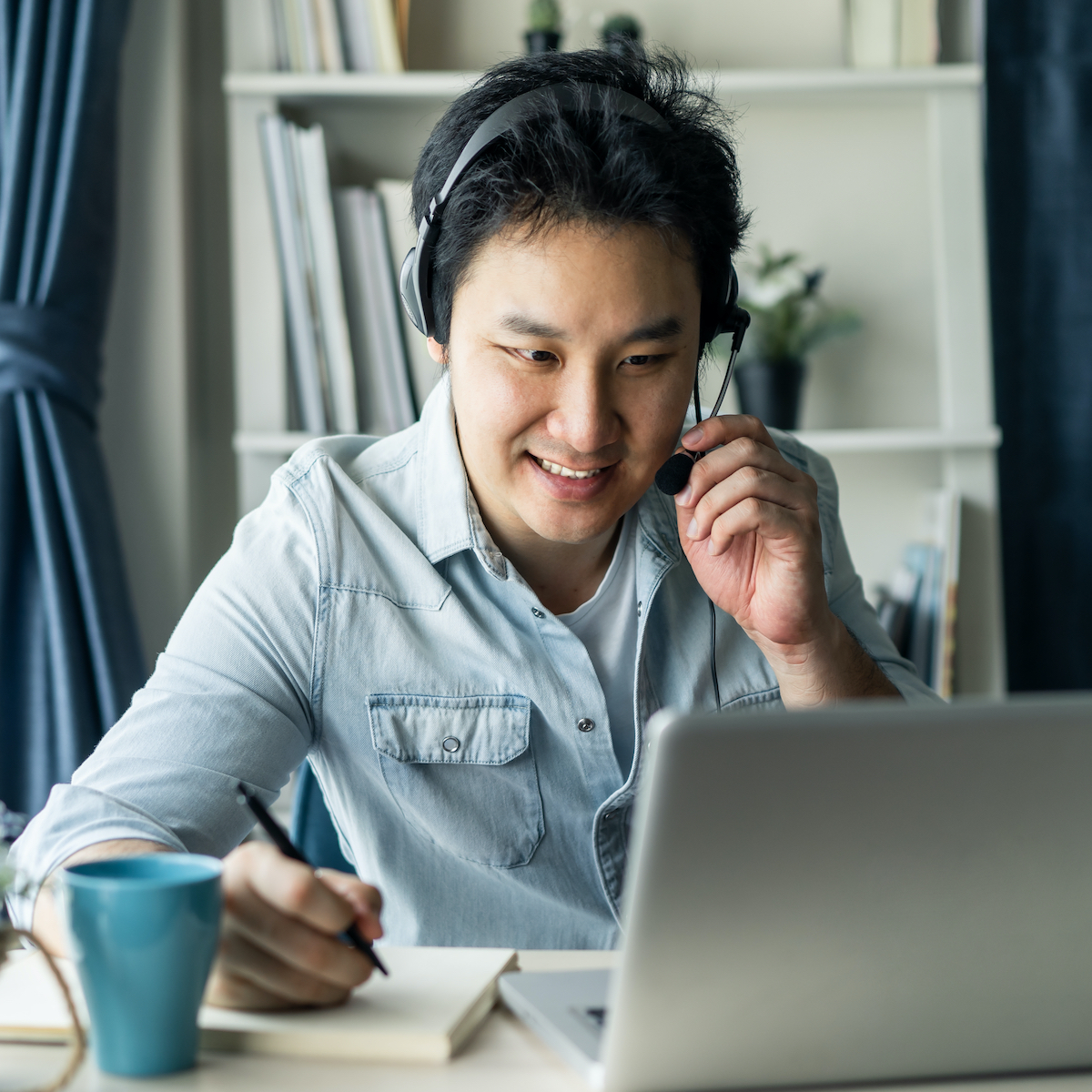One of the biggest challenges of working remotely is the lack of social and collaborative connection that comes with face-time and proximity. In the absence of the regular in-office routines and conversations that help to cultivate psychological safety, employees – especially new hires that have been onboarded remotely – risk feeling isolated, invisible and inaccessible. In a hybrid working world, left alone, these are real concerns with material consequences on business.
Feeling disconnected from your peers and from leaders impacts productivity, culture and employees’ ability – and willingness – to collaborate and innovate.
To combat this, managers need to proactively use the digital remote working tools in their arsenal to build connection and trust.
Two types of trust and why they matter
 Social scientists define trust as "the extent to which we’re confident in, and willing to act on, the words, actions, and decisions of another." Without trust, we wouldn’t believe in our coworkers' explanations or have faith in their decisions or direction, and would find it challenging to ask for help. Any team that lacks trust is a workforce that struggles with performance and productivity. But watch any movie about sporting teams that have to learn to trust each other or their new coach and you’ll understand that for trust to run deep, it needs to be built over time.
Social scientists define trust as "the extent to which we’re confident in, and willing to act on, the words, actions, and decisions of another." Without trust, we wouldn’t believe in our coworkers' explanations or have faith in their decisions or direction, and would find it challenging to ask for help. Any team that lacks trust is a workforce that struggles with performance and productivity. But watch any movie about sporting teams that have to learn to trust each other or their new coach and you’ll understand that for trust to run deep, it needs to be built over time.
In her book, Remote Work Revolution - Succeeding from Anywhere, Harvard Business Professor, Tsedal Neeley, talks about the differences between cognitive and emotional trust:
| Cognitive trust |
Is grounded in the belief that your coworkers are capable, reliable and dependable. It can be built quickly and is the fuel for productivity but alone isn’t sufficient to sustain teams in times of turbulence. |
| Emotional trust |
Is grounded in coworkers’ care and concern for one another and develops most easily when team members share common values and mindsets. It takes longer to develop but is the glue that builds loyalty the best. |
Both types of trust are important and managers who curate and cultivate the right types (and levels) of trust will lead the most effective teams - remote or not. Here are 10 ways to leverage your digital tools to do exactly that:
Using communication channels and reward and recognition programs to cultivate cognitive trust
Cognitive trust starts with understanding who is responsible and competent at specific jobs that need to be done. What might this look like in a hybrid work environment?
1. Giving employees a one-stop-shop for the information they need at any stage of their employee journey, and clear instructions on who to approach (and what channel to use!) if they need a hand.
2. Hosting department/team information on your employee engagement platform so new hires know who to go to with what question.
3. Asking all employees to include a description of their role/responsibilities and their core contact hours in their personal profile on your company communication platforms.
4. Making your organization's purpose, mission and values clearly visible on your communication platform and recognizing and rewarding this so all employees know what you’re working towards.

5. Rather than clogging up your employees’ inboxes or losing important updates in instant messaging apps, use your internal blog as a rolling record of company announcements, product developments, client success stories and/or team wins.
Using a self-serve, searchable model for distributing information (rather than a top-down/push model) gives employees the added benefit of having the freedom to access news at the time that is most effective for them, without it getting lost in the noise of other comms.
6. Use a strategic, peer-to-peer recognition program to create a clear picture of what "great" looks like for your company and who is achieving it. It helps build confidence in individuals and teams and gives all employees the opportunity to cultivate trust and reward success and innovation.
7. Broadcast a live feed of company-wide wins on a social recognition wall. Giving employees visibility and access from any device, anywhere in the world, lifts the visibility of the hard work of remote employees who would otherwise go unseen and reinforces your people’s sense of belonging and contribution.

Using your employee engagement platform to cultivate emotional trust
One of the most powerful ways to build emotional trust is by making yourself known to others. Neeley says that explicit, intentional openness – especially from leaders – is particularly important for remote workers because the ad hoc information sharing and social capital that might normally occur over lunch, during a mid-morning coffee run or around the "water cooler" is non-existent for remote teams.
So, how can you build that type of trust using technology?
8. Create a rhythm of communication that is built on openness and honesty. An employee communications calendar gives your employees an expectation of when information is going to be shared from different parts of the business.
For example, our CEO, Doug Butler, creates connections with our global team by publishing a weekly blog post called "Mission Mondays."
As the title suggests, he talks about how the company is tracking towards its mission, recognizes individuals or teams who have contributed to that recently, and shares movements in his calendar for the week. Even without meeting Doug face-to-face, that weekly post creates connection and cultivates trust. All employees can react with emojis or respond with comments, and he can see how many people are engaging with it instantly.

9. Don’t limit your internal news feed to work-related products or projects. Use it to celebrate (and enhance!) your company culture by publishing content that encourages knowledge-sharing, self-reflection and diverse and inclusive conversations at work. Then invite readers to continue to dialogue digitally in the comments, virtually in team meetings and (when restrictions allow) face-to-face, too! Here are some ideas that we’ve seen clients adopt:
|
Start an open “Ask Me Anything” survey where people can submit tough questions and leaders answer in blog or podcast format. |
|
Publish a collection of WFH struggles and tips or productivity strategies to counter them from people across your business. |
|
Create a Diversity, Equity & Inclusion hub for people to share what they’re learning, how they’re finding the journey (make the uncomfortable, comfortable!) and their recommended podcasts or books. |
|
Invite employees to share their personal stories and experiences. This can range from how they celebrate holidays or observe religious feasts, what they’ve learned from competitive sport to how they’ve overcome addiction or battled mental illness. Giving people permission to open up helps build bonds across geographical and departmental borders. |
|
Record video to communicate on sensitive topics so that intent or emotions aren’t lost in written translations. |
|
Publish a "Life in Lockdown" series where employees share how they’re coping (or not!) and what they’re doing differently to get through a turbulent time. |
|
Invite leaders in the business to share "Fast Failures" and the lessons learned from them, so employees can see that making and owning mistakes is part of the process of innovating and growing. |
 10. Use employee survey tools to check in on your people and remind them you want their feedback. You could create a regular pulse-check on engagement, or create monthly, quarterly or annual surveys to gauge anything from what they need to enhance their personal wellbeing, where or when they work most effectively or which channels they find most effective for building connection / information sharing.
10. Use employee survey tools to check in on your people and remind them you want their feedback. You could create a regular pulse-check on engagement, or create monthly, quarterly or annual surveys to gauge anything from what they need to enhance their personal wellbeing, where or when they work most effectively or which channels they find most effective for building connection / information sharing.
Being attentive to the needs of your employees and using digital tools to create a welcoming and inclusive environment will promote cognitive and emotional trust, even with employees you rarely (or never!) see. It’s a process that requires time and testing, but as all organizations navigate this new world of hybrid work and embrace remote teams, adopting some of these suggestions will get you ahead of the curve.
Want to discuss some of these ideas or see what these might look like for your business? Get in touch with our team today:

 Joy Adan
Joy Adan




